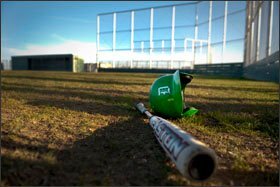Includes updates and/or revisions.
Faced with steep declines in state funding and local tax revenues, many school districts are discarding sports programs or considering painful cuts, despite the broad popularity of those activities among parents and students.
To save money—and spare individual sports from outright elimination—some districts are raising student fees, a common strategy when the economy, and school budgets, go south. Others are paring back the number of games and events, which in turn reduces travel and other expenses.

One school system weighing potentially deep cuts is the Dixon Unified School District, in northern California. The district faces proposed cuts of $3 million, out of a total budget of $28 million, in fiscal 2010. It cannot make up the budget shortfall through simply cutting personnel, supplies, and other areas, said Roger A. Halberg, the superintendent of the 4,000-student district. Officials are considering the elimination of all middle and high school sports programs, which now cost about $250,000 annually, a proposal that has roused opposition from many in the community.
“By far, the voice that we’re hearing is saying, ‘Don’t eliminate the sports,’?” Mr. Halberg said. As a former basketball and soccer coach, he is sympathetic to those views. Still, he faces hard choices. “My primary job is to make sure the district survives.”
The athletic director at Dixon High School, Tom Crumpacker, has posted a letter on the school’s Web site, arguing that athletics programs can survive—with the community’s help. The site also includes a link to a paper by the National Federation of High School Associations, titled “The Case for High School Activities.”
“We Will Have Sports Next Year,” a message on the Web site says. Yet families will have to help the district raise funds to make that promise a reality, the athletics official said.
“The burden of costs will rise for all involved—there are no options,” Mr. Crumpacker writes.
Trickle Down?
One indication of the depth of cuts can be found in the results of a new nationwide survey of school leaders by the American Association of School Administrators.

While the survey did not ask about reductions to sports specifically, 10 percent of school leaders reported having scrapped some kind of extracurricular activities in the 2008-09 academic year. But nearly triple the number, 28 percent, say they have considered cuts to extracurriculars for next academic year.
The depth of reductions to sports, as well as to academic programs, remains uncertain in many districts, partly because school systems are still crafting their budgets and waiting to see how much state funding they receive in fiscal 2010, said Scott Pattison, the executive director of the National Association of State Budget Officers, in Washington.
It is also unclear to what extent the federal stimulus money, which provides a total of roughly up to $100 billion for K-12 education, could trickle down to sports programs. Bob Palaich, the vice president of Augenblick, Palaich and Associates, a Denver financial-consulting company that works with school officials, believes stimulus funds could help sports, albeit indirectly, by putting money into academic programs and thus relieving the pressure to trim other areas, such as athletics. A number of district leaders shared that view.
Much of that stimulus money is likely to flow to K-12 schools through state governments as part of a $53.6 billion state fiscal-stabilization fund. A provision in the federal law prohibits money from being used on sports stadiums and facilities. Yet stimulus money could mean that districts can avoid the elimination of academic and athletic programs that typically follow budget cuts of 4 percent to 7 percent, reducing the cuts to 1 percent to 2 percent, Mr. Palaich speculated.
The federal infusion “puts more options on the table,” the consultant said.
Even so, schools and athletic-association leaders are already making plans to make do with much less.

School districts in Florida have seen local property-tax revenue decline greatly reducing budgets for sports.
In response, Roger Dearing, the chief executive director of the Florida State High School Athletic Association, the governing body for high school athletics in the state, has proposed that his board reduce the number of varsity contests, or games, by 20 percent, and the number of junior varsity games by 40 percent over the next two years. The board is expected to consider the proposal next month.
Doing so would reduce travel and other athletic costs across Florida’s 67 school districts, Mr. Dearing said, and make it easier for schools to plan financially. The only sport exempted from the rule would be football, which has but 10 regular-season games and typically draws in enough revenue to cover its expenses. Districts could request that other high-revenue sports be granted waivers, he added.
“If everyone sacrifices some,” Mr. Dearing said, “then some don’t have to sacrifice everything.”
Mr. Dearing, a former schools superintendent, said districts should make preserving academic programs a priority. “That’s what we’re about,” he said. Yet in many districts, there is considerable pressure from parents, booster clubs, and the community to protect sports.
“Those people are much more organized,” Mr. Dearing said. “Athletics, by its nature, has a political power that makes those decisions [to cut] difficult.”
There are no easy choices in the St. Lucie County district. The Florida school system was forced to make a 15 percent cut to its sports programs, financed at roughly $2 million annually, this academic year, said Jay Stewart, the athletic director for the 40,000-student district. As a result, the school system eliminated all middle school sports, replacing them with intramurals, and reduced the number of contests at the high school level.
The district is considering other, deeper cuts for next year, Mr. Stewart said, though it is waiting to see how much K-12 funding is provided by the Florida legislature, which is still in session.
The St. Lucie administrator says he recognizes that all school programs, including athletics, will absorb a hit in this economic climate. But he also sees long-term consequences for his southern Florida community when students, particularly disadvantaged ones, are shut out of sports.
In the Gym, Off the Street?
“We have the best dropout-prevention program available,” Mr. Stewart said. Through athletics, “someone’s going to be providing positive experiences for our kids,” he added, “or they’re going to be out on the street [receiving] experiences of their own.”
Some districts have responded to revenue shortfalls by placing new fees on sports. The Loudoun County district, in northern Virginia, has proposed a budget calling for $12 million less in spending in fiscal 2010.

The district, which has a total budget of about $745 million, is planning to assess fees of $50 per student for each sport he or she participates in next year. But those fees could rise to $100, or even $250 per student, depending on the funding provided by the county’s board of supervisors, which sets the schools’ budget, as well as by the amount of state and federal money the district receives.
Academic programs would suffer as well, with worker layoffs and furloughs, the elimination of academic programs, and school closings, if the financial situation worsens, according to a district budget summary.
In its “worst case” budget projections, the 56,000-student district also would have to eliminate junior varsity and freshman sports altogether, said Robert DuPree, the chairman of Loudoun’s school board. Many of those programs, even relatively new ones, like jv lacrosse, are popular, and their losses would be deeply felt, Mr. DuPree said.
Many parents “are willing to bite the bullet on sports fees, but they worry about the elimination of them” entirely, the board member said.
Like many district officials, however, Mr. DuPree is concerned about the impact of raising fees on students from poor families. Although he says his district would likely try to make accommodations to low-income families, he fears many would simply opt out.
“Parents are reluctant to say, I just can’t [pay for] this,” Mr. DuPree said. “It’s not an easy thing to do.”





